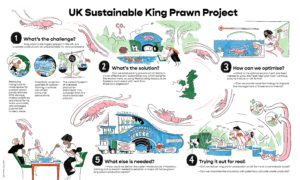By Dr. Andrew Kythreotis, Senior Lecturer and Director of the Lincoln Centre for Ecological Justice
The UK has experienced increased climate impacts over the past few years and this is predicted to get worse. This means the UK government will need to do more in the future to adapt to flooding and heat risks. But government progress has been slow, as reported in March 2024 by the Adaptation Committee of the UK Committee on Climate Change (UKCCC) in their Independent Assessment of the Third National Adaptation Programme. The UKCCC are statutorily charged with providing independent advice to government on climate mitigation and adaptation under the Climate Change Act 2008. One of the Adaptation Committee’s roles is to produce an independent assessment of UK climate risks and opportunities known as the Climate Change Risk Assessment (CCRA) through an Evidence Report and an accompanying Government Report. Three CCRAs have been conducted in 2012, 2017 and 2021, and the fourth one is due in 2027. Each CCRA has continually evolved from the preceding one in terms of the methods it applies to understand what future climate risks need prioritisation for government adaptation policymaking.
On 15th May, the UKCCC published a report and an explainer of the intended methodology of CCRA4. With recent criticism of a lack of government inaction over climate change, epitomised by the previous Chair of the UKCCC, Lord Deben’s backing of court action against the UK Government for weak climate policy, that was a few weeks ago upheld in the High Court, the stakes couldn’t be higher for urgent government action on climate adaptation.
Recent research co-published with colleagues critiqued the methods applied in CCRA3, arguing for a greater foregrounding of assessing social and political aspects of place-based climate risks in future CCRAs, so this recently proposed methodology of CCRA4 heralds the important question: is there anything new about the methods of CCRA4 that will catalyse more effective adaptation policy action by government?
Upon reading the report for the proposed new methodology it appears so. While the outcome areas remain similar to the previous CCRA3, concentrating on Economy, Health, Built Environment, Infrastructure and Land, Nature and Food, assessed through a Technical Report process, there is also the addition of a ‘Well Adapted UK’ advice report. The practical significance of this is that the UKCCC agree with recommendations in our recent research paper on recognising the importance of social and political place-based climate risks in framing future adaptation policy, in addition to assessing the more established bio-physical climate risks, which they have done a good job of so far. Evidencing the distributional and spatial implications of climate risk and adaptation will certainly aid practical delivery on the ground for local authority climate planners and officers. This is a paradigm shift from previous CCRAs that only considered adaptation in the planning processes at devolved government levels, interspersed with ad-hoc examples of place-based adaptation action. Moreover, the report is certainly a much-needed breakthrough for how rapidly evolving adaptation science can inform future adaptation policy processes in the UK at more discrete subnational scales, where adaptation implementation is highly complex and heterogeneous.
The report does not only signpost how the adaptation science-policy process might become more connected and rigorous in its application. The benefits for other end users outside of government are clear. For example, having a more robust methods process early in the CCRA4 cycle that pinpoints distributional effects and distinct geographical areas that are more adversely affected by climate impacts enables precious government resources to be concentrated on reducing social and political inequalities too – think of the CCRA4 as enacting a more strategic laser targeting approach that anticipates risk and their varied effects on different social groups.
Such an approach can also help decrease maladaptation by evidencing where, what and on whom, risks and impacts are most prevalent. By more clearly evidencing the communication risks and opportunities in these areas and relating climate adaptation more directly to ‘place’, can stimulate more streamlined positive policy action outcomes in those very places that need it most. This will have more positive knock-on effects for other sectors like health too, particularly at helping the NHS target hot spots for increased regional health funding. The links between climate change and health outcomes and inequalities cannot be overstated enough, as one example – brain disease – reported recently in The Conversation. To conclude, having a ‘Well Adapted UK’ advice report underpinned by new methods that go beyond assessing climate risks in predominantly bio-physical terms will enable the UK Government to more effectively target policy streams to the people and groups who need it most. It looks as if CCRA4 will potentially provide more robust quantitative and qualitative evidence, now it is up to the government to provide the political will and policy application. That will be the next acid test for government adaptation policy implementation in the next 5 years, regardless of which political party is successful in the upcoming General Election on July 4th.



